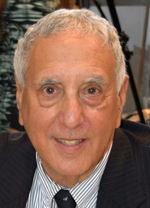By Donald H. Harrison

SAN DIEGO – Jack Cohen, a retired U.S. Forest Service fire research scientist who lives in Missoula, Montana, passionately contends that for centuries the United States has dealt with wildfires all wrong. Instead of spending billions of dollars to put the fires out wherever they may occur, efforts should be prioritized to make homes and other structures as invulnerable as possible to flying embers, he insists.
Cohen, who grew up as one of the few Jews living near the Tohono-O’odham Reservation in Arizona, is among the experts interviewed throughout a new documentary, Elemental: Reimagine Wildfire, that was directed by Trip Jennings and narrated by David Oyelowo. The documentary is being streamed on Apple TV, Google Play, Prime Video, and Vimeo.
In a telephone interview with San Diego Jewish World, Cohen spoke admiringly of the practices of Native Americans who for millennia before the coming of European immigrants not only lived with wildfire but utilized it in ways that along with lightning, created the fire-adapted landscapes discovered by Europeans.. Fires cleared dead growth, allowed new growth to flourish, and created spaces for agriculture and for grazing. Charred trees stored carbon that otherwise might have been emitted into the air.
When the explorers Lewis and Clark charted from 1804 to 1806 the territory gained by the United States via the Louisiana Purchase, one group of Native Americans even lit a treetop fire to wish them good luck for their journey home – so unafraid and accepting were they of the natural function of fire in their world, Cohen said.
Instead of building on the practices of Native Americans, European descendants adopted forest management practices from Germany – practices that have resulted in greater destruction of suburban and urban areas than would otherwise have been the case, according to Cohen.
He said the policy of suppressing wildfire no matter where it occurs allows vegetation to build up and intensify the amount of fuel available for future fires, which will “inevitably occur.” Such fires may be started by fallen power lines, lightning strikes, or human activity. Today, approximately one percent of all wildfires result in mega-fires that burn thousands, even over a million, acres and wipe out communities.
Blowing embers, not flaming trees or chaparral more than 66 feet away, are what causes most homes and businesses to be burned down in such extreme wildfire/urban events as those that have occurred over the years in California, including San Diego County.
In the documentary, one woman who lives within a forest that burned all around her told why her home had survived intact: “We built the house with a metal roof. We put no gutters up because gutters collect pine needles. We have no vegetation against the house. Our patio and our porch are concrete. We have cement fiberboard siding. We have closed … so that nothing can get up underneath and catch fire.”
She added that “We wanted to live in the forest. We didn’t expect the forest to adapt to us. So, we built with the forest in mind, and I think it saved us.”
The documentary recommended that homeowners who may be in the path of flying embers install vent screens, enclose eaves, multi-pane or double-pane windows, maintain a five-foot circumference of bare ground or pavement next to the house, and keep another 60 or 70 feet of “defensible” space beyond that.
According to Cohen, encouraging ignition-resistant homes should be the first step in a revamped national policy toward dealing with wildfire risk. Once homes are protected from embers, regulated fires can be set under appropriate conditions to help revitalize nearby land and benefit the ecology.
The documentary examines how forests regenerate after a fire, often attracting more wildlife than before.
It also shows how Cohen, in cooperation with the Insurance Institute for Business and Home Safety (IBHS), used the spacious indoor laboratory of the IBHS Research Center to propel a “blizzard of burning embers” toward structures of various compositions to understand what materials will resist being ignited.
Focusing on protecting homes “not only is cheaper but more effective” than the nation’s current wildfire strategy, Cohen declared. “We need ignition-resistant communities.”
“Research that has gone on for the last 30 plus years shows us that we have opportunities to prevent the big community fire disasters but if we continue our current emergency response approach, wildland/urban disaster fires will be inevitable,” he stated in the documentary.
“It is very frustrating for me to realize [the 2018 Camp Creek Road Fire in Paradise, California, which killed 85 people and destroyed 18,000 structures over 153,336 acres] didn’t have to happen, and then listen to an interview of a fire professional saying there is nothing that we could have done, because there is!”
*
Donald H. Harrison is editor emeritus of San Diego Jewish World. He may be contacted via donald.harrison@sdjewishworld.com
Donald Harrison wrote an exemplary article about wildfire and associated community fire destruction.
I suggest posting this article under “science & education” as well as “USA.” The article was prompted by the environmental science documentary “Elemental: Reimagine Wildfire.” The interview with Jack Cohen addressed his scientific research results describing how structures ignite during extreme wildfires and how this reveals opportunities for preventing future disastrous community fire destruction.
Suggestion taken, acted upon